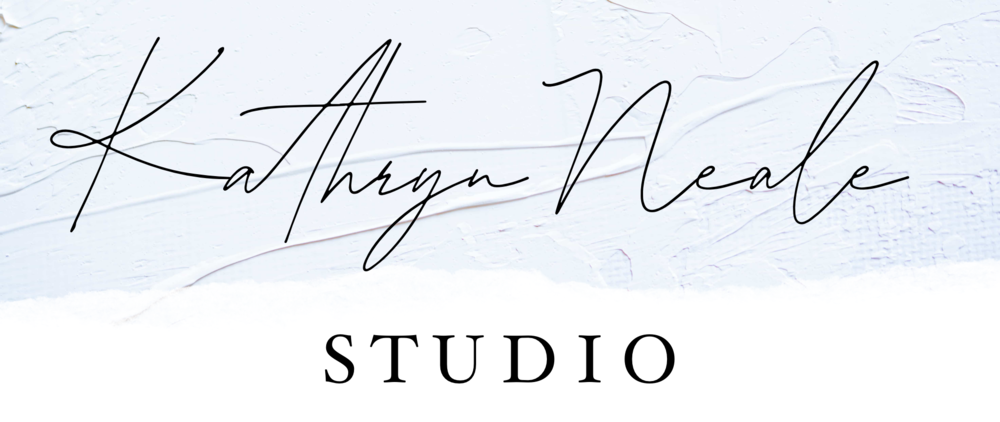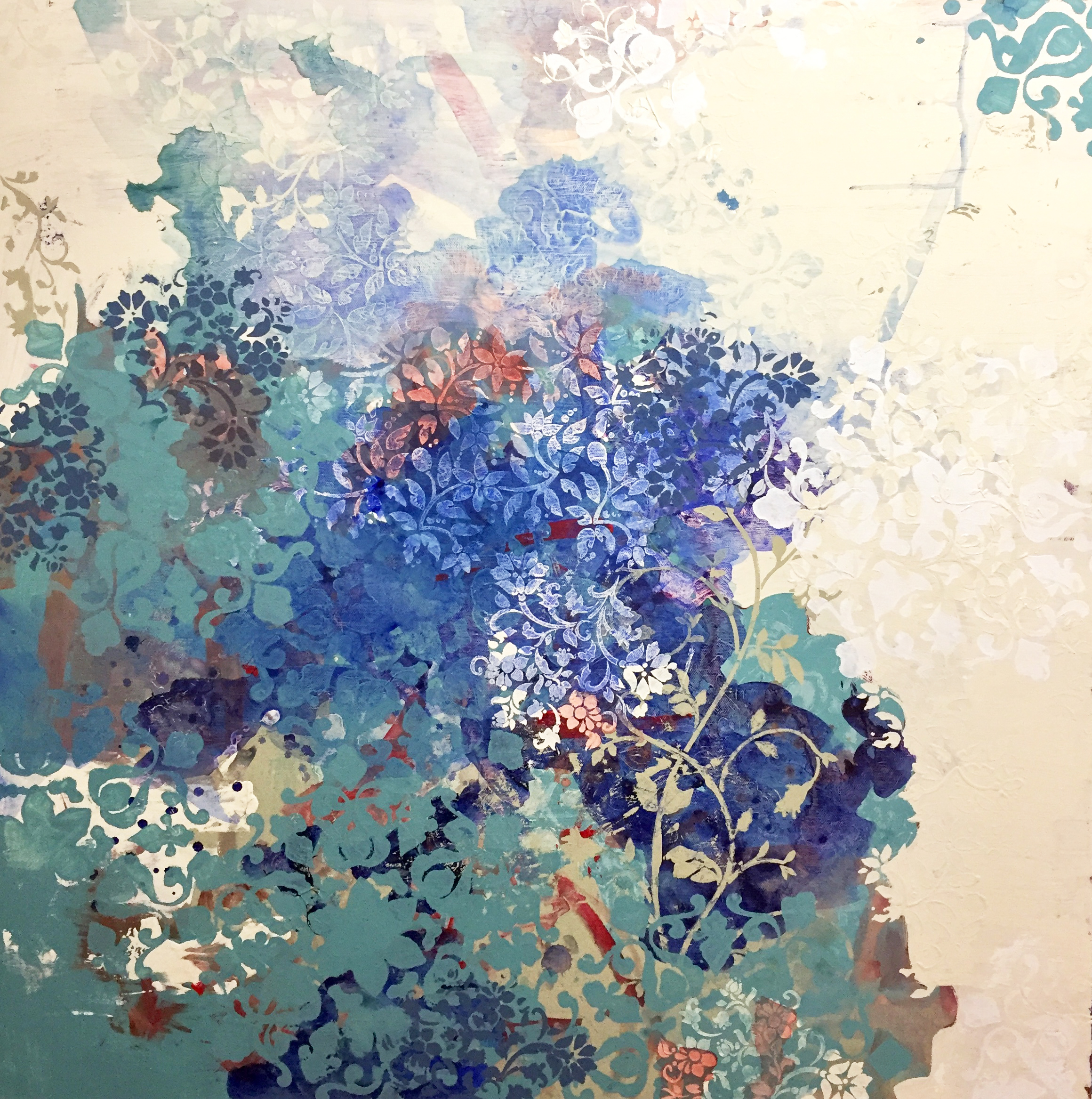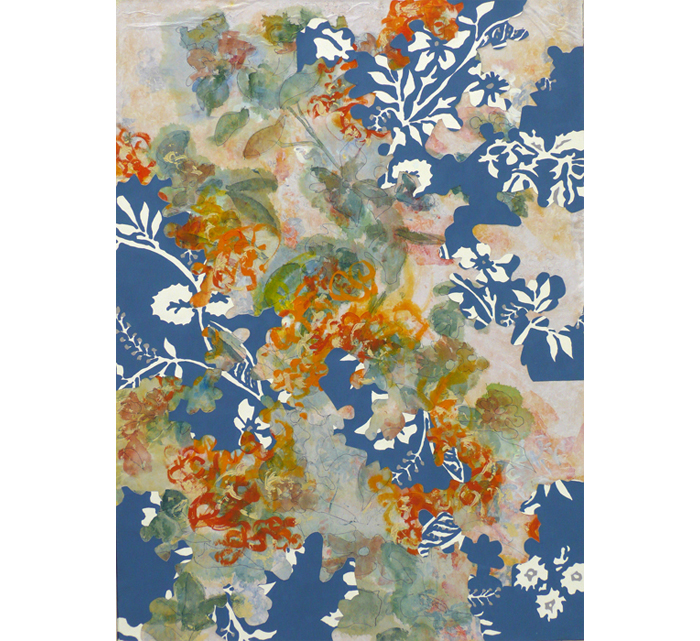Recently I re-discovered my old journal from my MFA program and besides throwing me into a fun trip down memory lane, it has resurfaced some of the same questions I still have about what kind of art am I still making and why?
Ideas like pattern, decoration, home decor. Why am I still attracted to these themes in my artwork and feel inspired to use these pre-made color schemes and floral patterns in my latest series?
In researching for my master’s thesis on the value of decoration as a cultural construct, I was interested to learn that there was a specific moment in history when decoration became of a "lesser" value then other art in our Western culture. From this point on, the discourse of art would be within the framework of "higher" and "lower" forms of making art: the "higher" being true art, the "lower" being craft or decoration.
In other cultures, decoration can be the highest form of art, and even be considered the most sacred representation of a culture's spiritual beliefs. Take the Maori, for example, the indigenous peoples of New Zealand, who view Moki, or the application of body tattoos to be sacred. The symbols tell the story of the individual as a unique person to his or her tribe, ancestors, and social standing (source).
Within the context of the last four-hundred years in Western art, the origin of decoration being of the "lesser" arts have been a constant cultural debate. Where did this all come from?
The answer is during the Age of Enlightenment in France a philosopher by the name of Immanuel Kant published his Critique of Judgment in 1790. Kant defines decoration as "a maker's intent to beautify an object beyond the functional use of the object." Something humans have been doing since the dawn of time, decorating caves for example. Kant claims no true objectivity can be pursued when it comes to art. In naming an object as "beautiful," for example, there must be a universal value placed upon it, and he emphasized that all judgment of taste is subjective, based upon varying degrees of emotional attachment (Kant, 92).
He concluded four basic "reflective judgments," namely the "agreeable, the beautiful, the sublime and the good."
Decoration and ornamentation would fall under the categories of "agreeable and beautiful." Before Kant, there was no different meaning behind decoration or ornamentation. They were valued both equally.
Ralph Lauren Roses, acrylic, chalk paint on tablecloth, 42”x30” 2018. Kathryn Neale Studio.
Kant explains that for him, beauty is an end unto itself. It is the "disinterestiness" that makes Beauty exist as pure whereas "agreeable" beauty, is not an end unto itself, but “that which pleases the senses in sensation.” Kant states that anything that is not Beauty, but that which pleases through emotion, is defined as agreeable beauty and its only role is to please (Kant, 110-111).
Decoration and ornamentation fall under this definition. Decoration is defined by Kant as that which can be an “ornament and embellish” but it can also “beautify, prettify, enrich and enhance." In general, Kant briefly describes, “ornament” as that which is “not internal to the entire representation of the object.” A frame, for example, that distinguishes a painting, is called “decoration and detracts from genuine beauty” (Kant 111).
At this point in Kant's thesis Kant concludes that because the purpose of decoration and ornamentation is "to please," it is placed of a "lesser value upon them then 'pure Beauty.'"
How convenient. Ornamentation and decoration play subservient roles to agreeable beauty. When Kant applies these scientific rules to his analysis of beauty, he has to place these definitions into a system. Therefore, a hierarchical relationship between the definitions of beauty relegates decoration and ornamentation to the lesser form.
It is undetermined if this was Kant’s original intent but the ramifications of this viewpoint certainly has reverberated throughout the discourse of beauty.
In the nineteenth and twentieth centuries, an established reaction against ornamentation brought on the birth of modernism. Adolf Loos, a turn-of-the-twentieth-century architect and essayist, wrote in his Ornamentation and Crime (1909), that the evolution of culture is directly linked to its elimination of ornamentation. His outrageous proposal equated the degeneration of a modern society with the superfluous use of ornamentation, in declaring, “only primitive cultures would cover objects with patterns” (Tietenberg, 14).
The discourse between the use or non use of pattern and decoration came to a frenzied halt during the twentieth century. The rise of modernist values placed form and function over the decorative.
Fabrication I, oil on canvas, 36”x36”, 2007. Kathryn Neale Studio.
Thanks to Kant for the continued discourse of the debate between "Higher Art" and "Lower Art," in which I experience firsthand myself what I stumbled upon, unknowingly, in the academic world. My first foray into the world of abstract painting firmly placed me right in the middle of the Abstract Expressionist movement in the 1950s starting with Jackson Pollock.
My first paintings were copying this style. And what's weird is that I didn't even realize it! I started to work on my first abstract paintings, trying to free myself up, grabbing a palette knife instead of a brush and these paintings were the first I came up with. It wasn't like I was remotely even thinking about copying Pollock.
The rest of the year was a fast whirlwind of formal experimentation as my professor and my own research were my only teachers. I enjoyed experimenting, copying, and finding out what I was attracted to or not. I did not yet have to ask myself why.
I do specifically remember though, in that program and then in my MFA program, the fact that I was attracted to pattern at all, was actually a disturbing discourse with some professors. It made them uncomfortable. It was like I was a disappointment that this was my interest.
Was it because I wanted to use pattern to comment on the exploitation of Colonialism of the West on African or Indian continents during the 19th century? No.
Or was it because using pattern was a brilliant vehicle to shock my viewers with sexual innuendos as a comment on Feminism? No.
Or perhaps I found pattern in the mundane of our everyday life, like patterns found on roads or sidewalks and I wanted my viewers to notice these types of pattern? No.
Construct I (Windows Series), Acrylic, paper on panel, 50"x37", 2010. Kathryn Neale Studio.
I'm just interested in pattern as a language of beauty. And the fact that we constantly regurgitate it over and over, repeating, like pattern itself, the motifs and symbols and stylized forms of foliage, flowers, and organic forms and decorate everything in our house with these images. That's pretty much it. That in and of itself is interesting to me still.
Do I need more than that? Why? Why do I need to shock or validate or re-contextualize, or go any deeper than what's actually happening in our interior design and consumer culture? Well, and maybe also the fact that elevating pattern to an art should be valued.
But more on this topic because when I continued to do a deep-dive into my research for my thesis, I stumbled upon a totally unknown movement that is not even recorded in our history books. I was shocked I'd never heard of it before! And the movement happened smack dab right in the middle of the roaring Feminist Movement 1975-1985. And hardly anyone knows about it or even highlights these group of artists.
As soon as I discovered more about this group, the more I was convinced I had found a context that I agreed with for my art. Something that I had been struggling to prove even to myself.
(to be continued in next post)
Sources:
Immanuel Kant, Ed by Paul Guyer, Trans by Paul Guyer & Eric Matthews, Critique of the power of Judgment, Cambridge University Press: Cambridge, 2000, p. 92, 110-111, 111.
Annette Tietenberg. “The Pattern Which Connects.” Pattern in Design, Art and Architecture. (Basel: Birkäuser Verlag, 2007), p.14




